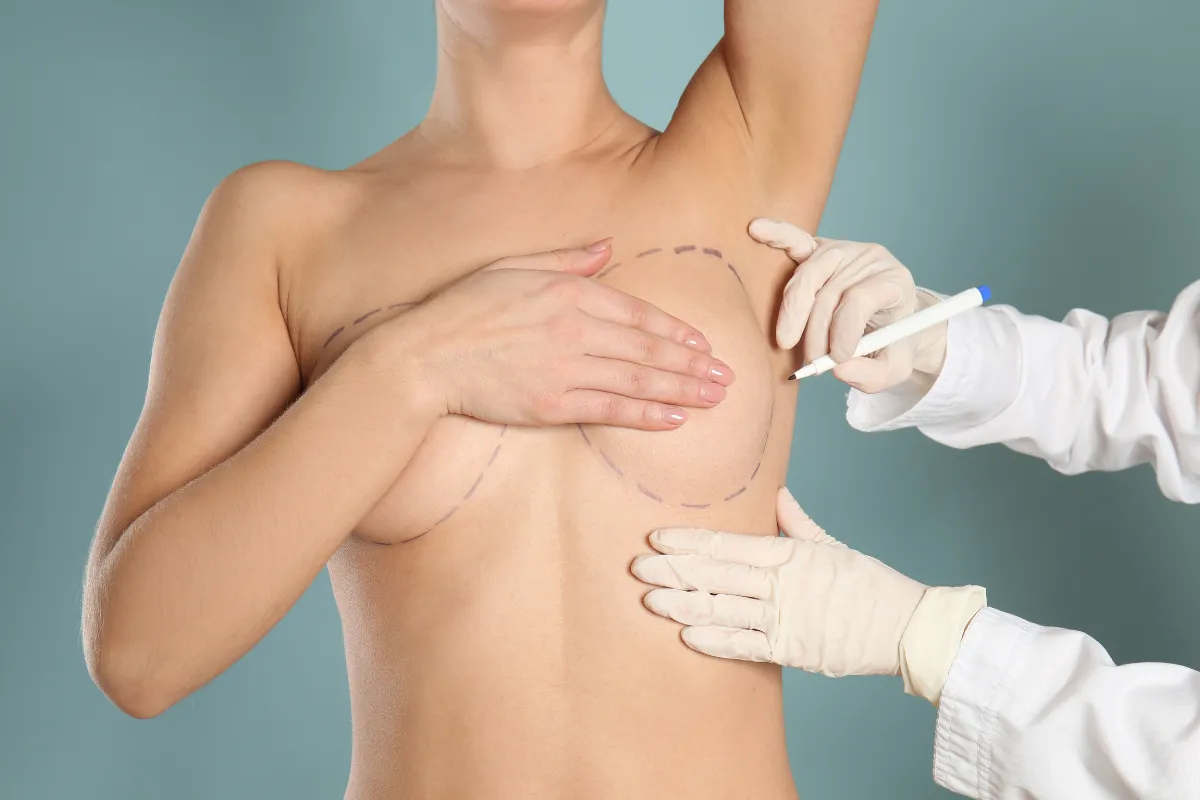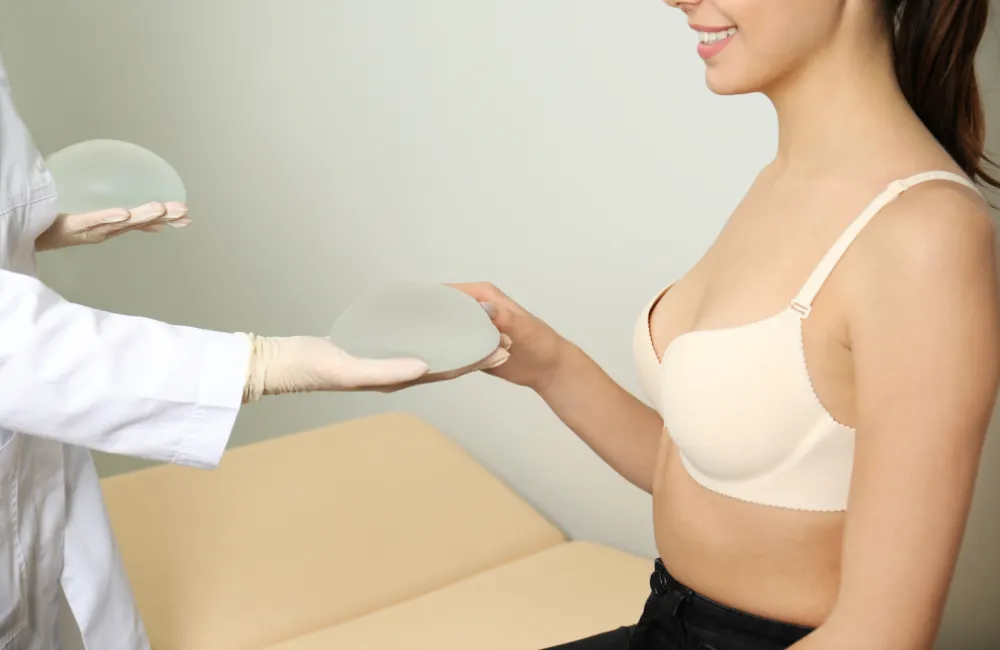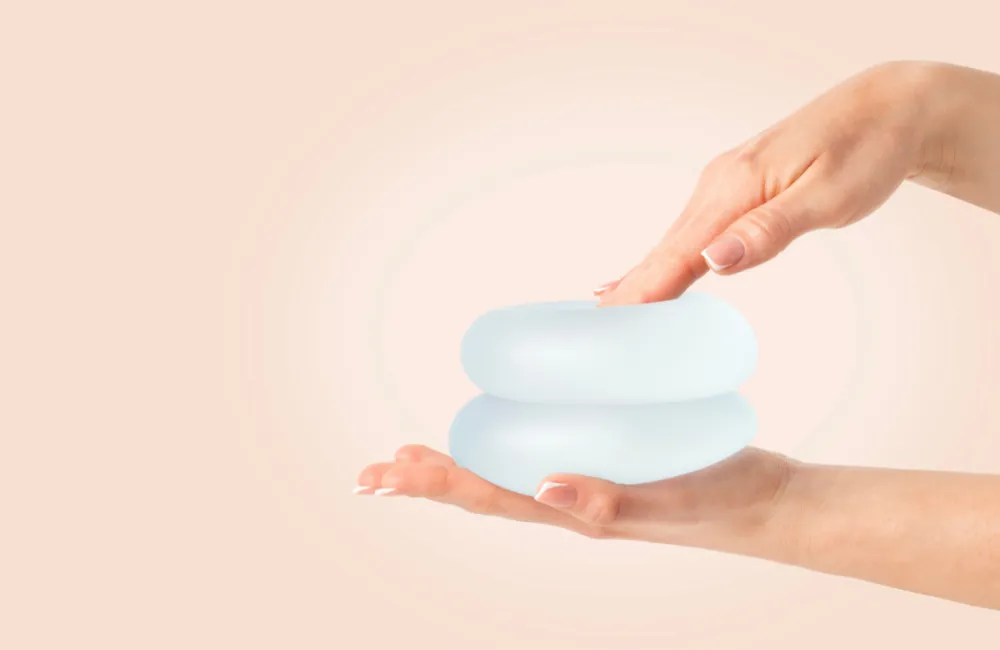What Happens to the Pectoral Muscle After Breast Implant Removal?
By Partington Plastic Surgery on February 18, 2024 in Breast Implants

The very personal decision to have breast implants removed usually results from medical, emotional, or physical considerations. While the focus is often on visual changes, understanding how this surgery affects underlying areas like the pectoral muscle is equally significant. Today, we’ll discuss what happens to the pectoral muscles after breast implant removal and answer other related questions.
What You Should Know About Breast Implant Removal and Its Effect on Muscles
Such a significant change as implant removal cannot go totally without a trace, thus it is rather reasonable. Still, the most important thing is to be quite clear about exactly what you are seeking to achieve. Knowing your goals and expected results will help you follow this path thoroughly and with peace of mind.
Patients should understand that a critical muscle in the chest, the pectoral muscle, might change during and after the operation. The positioning of the implants – above or below the muscle, the duration of their placement, and patient fitness and condition determine the impact on this muscle.
The Role of the Pectoral Muscle in Breast Augmentation
Anatomy of the Pectoralis Major Muscle
This muscle across your chest is essential to upper body strength and movement. Essential for everyone involved in exercise or other physically taxing activities, it is responsible for motions including pushing, lifting, and arm rotation.
Pectoral Muscles After Breast Implant Removal: How Implants Interact with Muscle Tissue
Breast implants affect the pectoral muscle differently depending on surgical technique:
- Subglandular Placement (above the muscle): The implant sits between the breast tissue and the pectoral muscle, causing little disturbance.
- Submuscular Placement (under the muscle): For optimal insertion, the pectoralis major muscle must stretch and adapt to the implant.
Differences Between Placement Types
Because the pectoral muscle must gradually fit the shape and size of the implant, submuscular insertion usually results in more notable modifications. However, subglandular implantation may damage surrounding tissue but not the muscle.
Immediate Changes After Breast Implant Removal

Surgical Impact on the Pectoral Muscle
The surgeon may have to gently move surrounding tissues during implant removal to guarantee a safe and successful operation. Usually, this entails changes in pectoral muscles brought on by implant displacement or strain. The scar tissue may cause the implant to feel tight, so it is necessary to remove it, and may affect the surrounding muscles and tissues.
Healing Process and Tissue Adaptation
After implant removal muscles start the process of restoring to their native position and function. This time is crucial for muscle repair and tissue adaptation after implant-induced stretching, reshaping, and injury. Following post-operative care guidelines and doing advised physical therapy or exercises help to assist in the rehabilitation of the muscle and maximize its return to normal strength and flexibility.
Common Post-operative Symptoms
After implant removal, patients may have various symptoms. Usually, these consist:
- Swelling around the chest area: This is normal when the body heals and inflammation decreases. Swelling can take several weeks to decrease.
- Discomfort or tightness: If surgery involved considerable tissue manipulation or scar tissue excision, some patients report chest stiffness or soreness.
- Temporary changes in chest strength and mobility: Pectoral muscles after breast implant removal may feel weaker or less flexible.
Natural Look
Confident Beauty
24 Hour Rapid Recovery, Muscle Sparing.

Long-Term Effects on Muscle Function and Appearance
Potential Muscle Atrophy
Patients who have had implants under the muscle for a long period may experience some muscle loss. The implant may cause muscle atrophy or weakness due to extended straining or decreasing use.
Skin and Tissue Retraction
Following implant removal, the skin and underlying breast tissues could change to fit the new chest measurements. Skin elasticity, collagen production, and age affect this process. Sometimes the skin pulls back and tightens around the chest wall giving a more young look. The skin may sag or wrinkle in various conditions.
Adjustment to Chest Symmetry
Particularly for patients who have had notably bigger implants or those with asymmetrical breasts before surgery, complete removal of implants may cause considerable modifications to the general look of the chest. Breast lifts or fat transfers may be indicated to provide a more balanced and attractive result.
Recovery of Muscle Strength and Elasticity
The pectoral muscle after breast implant removal can restore its original tone and strength over time and with physical therapy. Individual fitness levels, implant size and weight, and implant duration affect healing.
Breast Implant Illness and Breast Implant Removal
See a trained plastic surgeon to go over potential choices when considering the removal of a breast implant for BII or other reasons. Explant surgery can remove implants and scar tissue to fit specific needs. This method seeks to reduce symptoms and assist with the overall well-being of the patient.
Does Muscle Weakness Occur?
Not all breast implant removals induce muscle weakness. The degree of weakening depends on the implants’ weight, size, duration, and muscle condition before surgery. Implants can stretch or displace chest muscles, affecting strength after removal. Most people, with proper treatment including supervised physical therapy and a customized rehabilitation plan, may restore their muscular function and reduce any pain. After surgery, consult a doctor to resolve any problems that occur.

How Exercise and Rehabilitation Can Help
Recommended Exercises for Pectoral Muscles After Breast Implant Removal
Though recovery is a slow process, concentrating on mild, focused exercises can greatly increase muscular strength, flexibility, and general mobility. These activities help you move again without injury:
- Wall Push-ups – An easy workout ideal for restoring chest strength and stability. Try a few repeats and increase as you get stronger.
- Arm Circles – Arm circles increase shoulder mobility and flexibility by simple yet powerful means.
- Cable Rows – Start with a light weight and focus on form to avoid strain.
- Resistance Band Pulls – Excellent support for focused chest and arm exercises, resistance bands let you work on strength without straying from your muscles.
- Chest Presses – Start with light dumbbells or resistance bands on a level surface. Emphasize controlled motions and a full range of motion to make sure your elbows remain slightly bent at the top, therefore preventing joint locking.
Importance of Posture and Stretching
Proper posture is essential throughout healing. Good posture improves alignment and helps you avoid discomfort while you recuperate in addition to relieving strain in the chest and shoulders. Adding stretching to your routine helps reduce stiffness and speed recovery. Emphasize soft shoulder and chest stretches meant to progressively increase comfort by restoring flexibility.
Gradual Progression to Strength Training
Once your surgeon approves more advanced exercises, you can resume strength training. To prevent overdoing it, start with modest weights and controlled motions. Consistency, not intensity, will help rebuild the strength and function of your pectoral muscles after breast implant removal. Ensuring a safe and efficient recovery depends mostly on patience and gradual progress.
Will the Chest Look Different After Implant Removal?
Implant removal may alter breast form, contour, and volume. Variations in implant size and skin elasticity determine the degree of these modifications. The chest’s post-surgical look depends on the skin’s ability to retract. Younger patients or those with more collagen might have a more smooth change.
Options to Improve Appearance:
- Natural volume repair with fat grafting
- Skin tightening procedures including laser treatment
- Pectoral muscle repair after major alterations or displacement
- Breast reconstruction of the breasts to bring back symmetry and shape following injuries or surgery
Plastic surgeons can offer more options for chest cosmetic surgery during consultation. Realistic expectations and open communication of any concerns or intended results during the consultation process are vital.
Caring for Yourself Along the Journey
Breast implant removal is emotional and intimate. Approach the process with empathy, patience, and support. Some important takeaways:
- Although pectoral muscles after breast implant removal will take time to adjust and heal, with correct treatment they will restore strength and function. Give your body time to heal and be kind to yourself.
- Strong aids in your recuperation are exercise, proper posture, and physical therapy engagement. These steps can gradually enhance strength, mobility, and balance.
- Count on the natural resiliency of your body. With the correct support system – friends, family, or medical professionals – and experienced coaching, you can overcome this process and emerge stronger.
Every recovery is different, hence tailored treatment is significant. We suggest consulting a board-certified plastic surgeon to assess your needs and create the best strategy. Your post-surgery transformation can be a happy and empowering one with professional help and self-care.
Return to Overview